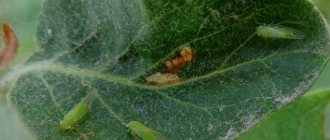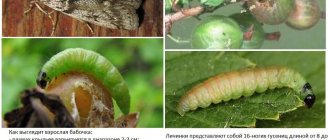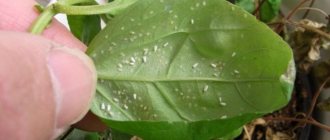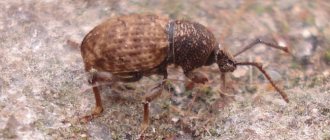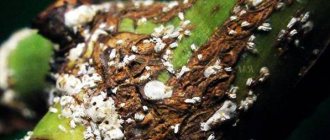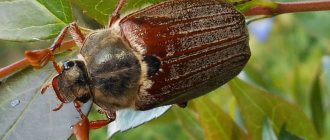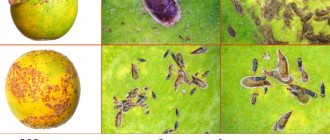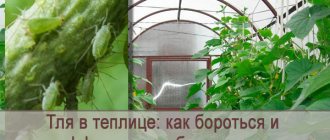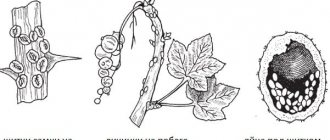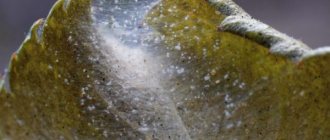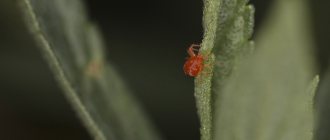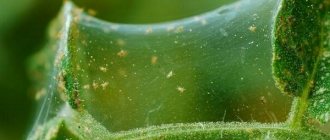Moths are perhaps the most common insect pest on earth, which causes a lot of trouble for humans. One of its varieties is moths. They belong to the Lepidoptera family, which includes more than 6,000 species of moths (the moth butterfly is pictured below). Each species has its own characteristics and taste preferences: some eat plants, others eat food, and others pose a threat to bee colonies. The surprising thing is that it is not the adults who are dangerous, but their larvae - the moth caterpillars. This article will tell you about the most common types of such pests.
Melnichnaya
The mill moth is a dark gray butterfly, measuring up to 14 mm in length. The insect was brought from India and prefers to feed on grains, flour products, nuts, mushrooms and dried fruits. Therefore, flour mills, bakeries or mills become its habitat. The lifespan of the pest is about three weeks, during which the female manages to lay about 200 eggs. Seven generations are hatched per year.
Control measures
The basic rule of combating any type of moth is to detect it in a timely manner and correctly identify it. There are 3 main ways to destroy harmful insects:
- chemical;
- mechanical;
- biological.
Treatment with insecticides is the most effective, but also the most undesirable method. Chemicals will indeed quickly destroy butterflies and larvae, but they can also harm beneficial insects, and in addition, after using toxic drugs, it is not always possible to eat crops and products. Also, not everyone is ready to use toxic substances at home. Therefore, insecticides are recommended for use in cases of severe infestation or when other means have failed.
The mechanical method is absolutely safe, but requires a lot of time and patience. You need to manually collect and destroy caterpillars and butterflies.
The biological method allows you to get rid of moths both with the help of biological products and with the involvement of natural enemies of these pests. Among them are birds, lizards, frogs, and some types of predatory insects. You can also use folk remedies.
To get rid of pests as quickly as possible, several methods are combined.
Gooseberry
The gooseberry moth is a harmful and dangerous pest of gooseberries and currants. Insects spend the winter in the ground in the state of pupae. With the arrival of warm days, moth butterflies emerge from them and lay eggs in flower buds. The hatched moth caterpillars feed on the pulp and seeds of the resulting fruits. Having thus destroyed the first ovary, the caterpillars crawl through a hole gnawed on the side onto a nearby growing berry. After 5-6 days, using a similar method, the caterpillars move to the next berry, entangling the bunch with a thin web.
Description and life cycle
An adult moth is a butterfly with a wingspan from 1 to 4.5 cm (depending on the species). Some tropical moths grow much larger, with a wingspan reaching 8 - 8.5 cm. Butterflies have a thin body, long legs, and two pairs of wings. The upper wings are narrow, in the form of an elongated triangle. The lower ones are wide, rounded, with fringe along the edge. The head has bulging eyes, antennae and a mouth organ in the form of a proboscis. The proboscis in many species is shortened, and in some it is not at all. Adults do not feed, and their vital activity is supported by substances accumulated during the larval stage.
The vast majority of moths are inconspicuously colored in all shades of gray or brown. These species are mainly active at dusk and in the dark. But there are also brightly colored moths. They are not afraid of sunlight and fly during the day.
Appearance of a mill fire
The life cycle of the true moth consists of 4 stages. After mating, the female lays eggs. After 7–10 days, larvae emerge from the eggs. The caterpillars, which look like small light worms, are actively feeding and growing. After 10–35 days, the larva sinks into the soil, where it pupates. The development of a butterfly inside a pupa usually takes from 10 to 25 days, but some species overwinter in a cocoon and emerge when the weather warms. An adult butterfly lives 1 – 3 weeks. During this time, the female manages to lay from 70 to 150 (sometimes up to 200) eggs.
Wax
The wax moth is known to a wide range of beekeepers. Its caterpillars are a dangerous pest of honeycombs. They damage not only honeycombs, but also honey, brood and bee bread. As a result, the frames and insulation of the hives are damaged, and this in turn leads to the death of bee colonies.
Moth moth
Interesting!
However, the insect also has a positive side: since ancient times, moth caterpillars have been used in folk medicine to prepare medicinal tinctures. This drug has antiviral and antibacterial effects, improves metabolism, strengthens the immune and nervous systems.
The harmfulness of the larvae
In the case of moths, the main pests are caterpillars. The larvae, as soon as they are born, immediately begin to eat. They need food, firstly, in order to accumulate the necessary amount of building material to transform into a butterfly inside the cocoon, and secondly, to deposit enough nutrients to survive at the adult stage.
Depending on what species the moth is, the pest affects:
- grocery products (flour, nuts, cereals, pasta, cereals, confectionery);
- cereal crops and grain collected for storage;
- garden and vegetable crops;
- wax honeycombs, honey, bee bread;
- various types of trees.
As the number of larvae constantly increases, they cause quite serious damage.
Preventive measures
For the purpose of prevention and pest control, it is recommended to regularly inspect the bushes of berry crops for the presence of moths.
This method will help to begin the extermination of insects in time and protect the untouched crop from the invasion of the moth. It is also necessary to monitor other growing plantings that are located near gooseberries, currants and raspberries. Understanding the specific life functions of moths and natural phenomena will help the gardener destroy parasites. For example, in a very hot and dry summer, the moths themselves die when they do not have time to hide in the top layer of soil.
The “pink muscordine” mushroom, which appears on bushes, also contributes to the extermination of these pests. It appears in the spring when precipitation is heavy. This mushroom has a negative effect on moths.
To prevent moths from appearing on the bushes, it is recommended to provide them with good lighting and normal air circulation. It is necessary to periodically thin out the bushes so that they are not dense. When autumn comes, experts advise cleaning around the bushes - clearing the soil of fallen leaves and other debris.
In addition, to protect the bushes from insects, you can hang feeders on the trees next to the gooseberries in winter. Hungry birds will feed on grains and seeds and will most likely build nests near or on the site in the spring. This way in the spring they will exterminate moths and other pests.
Flour moth
It is distributed almost everywhere and affects granaries, warehouses, confectionery factories, shops, and flour mills.
Female flour moth
Like all the other types of moths listed above, it feeds on grain, cereals, seeds, and confectionery.
The size of the flour moth is quite large - the wings reach a size of 12-30 mm. The color of the wings is light brown with a dark pattern.
Genetics[ | code]
The mill moth is a model species used to study problems in phenogenetics, molecular genetics, cytogenetics and developmental biology. The karyotype consists of 30 pairs of chromosomes. Gender is determined by the ZW system. The mitochondrial genome is a circular strand of DNA consisting of 15,327 nucleotide pairs and contains 37 genes, of which 13 genes encode protein, two are rRNA and 22 are tRNA. About 0.7% of the DNA on the W chromosome is of mitochondrial origin, and 83% of the mitogenome sequence is present on the W chromosome.
Numerous variations in the mill moth's eye color caused by mutations have been described. Analysis of eye color mutations in Ephestia kuehniella
provided the first evidence for the "one gene, one enzyme" theory in classical genetics.
Pest prevention
You can prevent the appearance of moths in different ways. If we are talking about species that settle in the house and spoil food, for example, southern barn or dried fruit, then the following measures will help:
- ventilate the room as often as possible and clean regularly;
- periodically check supplies for the presence of larvae;
- Store food correctly, observe temperature and humidity conditions.
Food storage
If we are talking about species that harm garden or garden crops, then they are protected from pests as follows:
- after harvesting, all debris, weeds, plant debris are removed from the site, and the soil is dug up;
- 7 – 10 days before planting, the soil is treated with a weak solution of potassium permanganate;
- During the planting season, it is necessary to regularly weed and loosen.
Next to the beds you can plant plants that repel moths - lavender, wormwood, mint. The same can be done in the apiary to protect the hives from wax moths.
Southern barn moth
Just like the miller moth, it prefers to destroy grain, confectionery, nuts, and dried fruits. Most often found in the southern regions of the country.
The moth is small in size - 7-9 mm - and is distinguished by a dirty white-yellow color with a dark pattern on the wings. Butterflies live for two weeks.
Moths clog grains and produce with the web tubes they create. They pose a particular danger to granaries, where they destroy seed embryos. As a result, seed germination is lost.
The southern granary moth lives in granaries, mills, elevators, etc. (in the upper layers of the embankment at a depth of 15 cm)
The moth is afraid of low temperatures and dies already at a temperature of +14 degrees. Therefore, one of the ways to successfully combat it is to store food and grain at temperatures below 14 degrees.
Harm
The main damage to human economic activity is caused by the larvae of true moths. They negatively affect the following areas:
- Silviculture – cone moth, acacia moth.
- Household - dried fruit, flour moth.
- Gardening - cabbage, acacia, rapeseed, carrot, pear moth.
- Beekeeping - small and large wax moths.
- Cereal crops - mill moth, grain moth and barn moth.
Cabbage and acacia moths have the most negative impact on the yield of garden plants, cereal crops and garden trees.
The acacia moth is a butterfly that poses a danger to white acacia and legumes. The larvae infect the plant in the fields, end up in storage along with the harvest, where they finally infect the raw material and complete the life cycle.
Distinctive features of the acacia moth:
- wingspan – up to 30 mm;
- the hind wings are light gray, the front wings are bluish-gray with white and orange patterns;
- larva length – up to 22 mm;
- The color of the larvae is brown, dirty green or pinkish.
The diet of the acacia moth larva includes more than 80 species of wild and cultivated plants: soybeans, peas, beans, lentils, white and yellow acacia, clover and lupine.
The insect prefers large-fruited crops. The bean moth larva negatively affects not only plant growth, but also damages the seed. The new crop has poor germination and unsatisfactory presentation.
Most garden owners are familiar with the cabbage moth. Insect larvae eat cabbage leaves in late spring and early summer. Larval development ends at the end of June. Pupation occurs in the soil. In August, butterflies appear and lay eggs on weeds and the underside of the leaf blade. By autumn, the second generation is formed, which waits out the winter in the soil.
Appearance of an adult and cabbage moth larva:
- wingspan – up to 26 mm;
- the color of the front wings is yellowish with brown stripes, the hind wings are light yellow;
- The caterpillar's body color has different shades of yellow, the head is light brown;
- the length of the larva at the last stage of development is 30 mm;
- A distinctive feature of the caterpillar is two light stripes on its back.
Larvae cause damage to cabbage.
Newly emerged caterpillars eat the lower surface of the leaf blade without forming through holes. Adult larvae cause more significant damage by gnawing holes. The larvae's diet includes cabbage, horseradish and beets. offers services for treating homes and areas from insect pests. Experienced specialists using professional equipment will select the optimal method of control, quickly and permanently rid you of parasites. For consultation, contact a representative of the organization by phone.
Calculator
Traditional methods
For a long time now, gardeners have not only been breeding, growing and harvesting berries, but also inventing and coming up with various remedies against the gooseberry moth. Practical developments in this matter are passed on from mouth to mouth and include many different simple and effective methods that are safe for shrubs, humans and pets:
-
Mustard infusion.
Stir 100 grams of mustard in 10 liters of running water and infuse the resulting mixture directly for 2 days. Next, the solution is filtered and diluted again in water, twice its volume. - Spruce and pine.
200 grams of pine and spruce needles are poured with 2 liters of ordinary water. Next, the composition is tightly closed and allowed to brew for 7 days, stirring every day. Then the mass is filtered and diluted in water in a ratio of 1 to 10. The resulting product is sprayed on the plants once a week and during the entire flowering period. - Tomato tops.
1 kilogram of tomato tops is left to soak in 10 liters of water for the whole night. Next, the solution is filtered and the bushes are sprayed once a day. - Wood ash and soap.
1 kilogram of wood ash is infused in 10 liters of water for about a week. The resulting liquid is filtered well and grated soap is added directly to it. This is necessary so that the liquid sticks to the gooseberry leaves. The composition is sprayed on berry bushes at the moment when ovaries begin to form on them. - Elder.
Stir 100 grams of elderberry powder in 1 liter of water and infuse it. After 2 days, the product is filtered. Gooseberries are treated with it in the evening, when the moths are most active. To treat the bushes, 200 ml of infusion is diluted in 800 ml of cold water. Also, the gooseberry moth can be scared away from the bushes by simply sticking an elderberry branch into them. - Pharmaceutical chamomile.
100 grams of dry chamomile is poured into a bucket of hot water. The mixture is infused for 48 hours and the bushes are sprayed with it 4 days after all the flowers have fully bloomed. Instead of chamomile, you can use onion, yarrow herb or tansy. - Tobacco.
400 grams of tobacco or shag should be soaked in a bucket of water and left for 2 days. Then the resulting solution is diluted in 10 liters of clean water and the bushes are sprayed with the product during the flowering period approximately once every 7 days.
Regardless of the chosen product, treatment of bushes against moth must be carried out directly at a strictly specific time. It is better to do this either early in the morning or late in the evening. This way you will protect the leaves of the plant from sunburn.
Cone moth
The cone borer is a pest of coniferous trees that damages their cones. The species is widely distributed throughout the Palearctic region. It is found everywhere on the territory of the Russian Federation.
Description
The wingspan of the cone moth butterfly is 2.5-3 cm. The front pair is decorated with light stripes in the form of zigzags, arranged transversely, along the edge there is a dark border, there are dark and light spots. The main color of the rear pair of wings is light gray; a dark border is also visible on them.
Pinecone moth butterfly
The larva of the cone moth is a caterpillar, the size of which can range from 2 to 2.7 cm. The integument is colored brownish-brown or yellowish-gray, there is a fuzzy pattern made up of dull gray stripes located longitudinally. The head is red-brown.
During one growing season, the cone moth produces one full generation and a second facultative one.
Maliciousness
Cone moth larvae damage cones:
- ate:
- pine trees;
- Siberian cedar;
- Siberian fir;
- Caucasian fir, etc.
If the year turns out to be a lean year, then the caterpillars change their diet somewhat, including the blossoming buds and young shoots of spruce and pine trees. When the pest eats the cones, it leaves reddish-brown excrement on them. Such cones turn brown.
